June 7, 2025 | 22:45 GMT +7
June 7, 2025 | 22:45 GMT +7
Hotline: 0913.378.918
June 7, 2025 | 22:45 GMT +7
Hotline: 0913.378.918

Since the beginning of the year, An Giang province has announced the export of dozens of tons of mangoes of all kinds to demanding markets around the world. Photo: Le Hoang Vu.
An Giang has a mango growing area of about 13,000 ha, ranking behind only Dong Thap province. Mango varieties commonly grown in this locality include: Keo mango, flat-seeded mango, Hoa Loc mango, etc. Among them, some are especially delicious, such as Keo mango and flat-seeded mango. Over the past 3 years, mango growing areas in An Giang province have aimed at high quality standards and linked with businesses for export.
Mr. Huynh Thanh Minh, Chairman of the Board of Directors and Director of Long Binh Agricultural Cooperative (An Phu district, An Giang province), said: Although located adjacent to the Cambodian border, An Phu has the second largest mango growing area in the province. The mango growing area meeting export standards reaches over 600 ha, with more than 60 growing area codes. Particularly, the Keo mango growing area following GlobalGAP standards is over 360 ha.
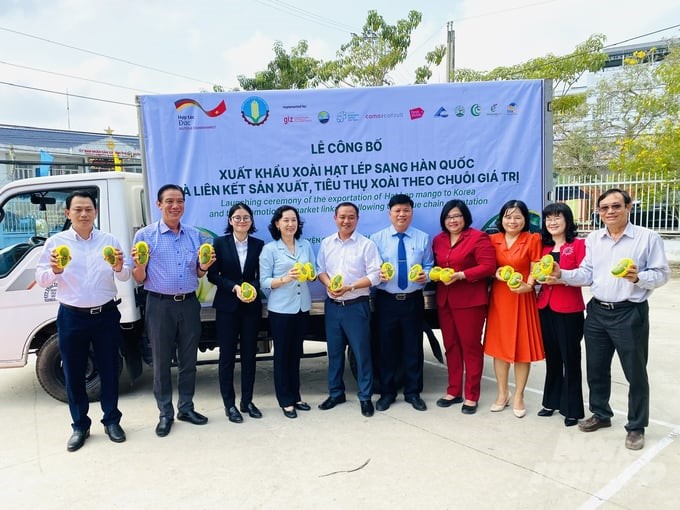
In addition to increasing the application of science and technology, mango growers have linked with businesses to confidently export. Photo: Le Hoang Vu.
Currently, Long Binh Cooperative has about 90 ha linked to mango growing. All cooperative members comply with safe farming procedures, ensuring that mangoes are not contaminated with pesticide residues exceeding the allowable threshold and banned active ingredients.
Cho Moi district has the largest mango growing area in An Giang province. In just the first 2 months of 2024, this locality announced the export of the first two batches of mangoes to demanding markets. The first batch is green-skinned mangoes exported to the Australian and US markets. The second batch is flat-seeded mangoes exported to the South Korean market. The total weight of the two batches of exported mangoes reached dozens of tons.
According to Mr. Nguyen Minh Hien, Chairman of the Board of Directors and Director of GAP Cu Lao Gieng Cooperative (Cho Moi district), to have mango raw material areas qualified to export to demanding markets such as the US, Australia, and South Korea and conquer other markets, local governments at all levels, businesses, cooperatives, and people have made great efforts through an over-10-year process of arduous negotiations. Currently, mangoes have met the strict requirements of partners, from the issue of pesticide residues within the allowable threshold to the management of harmful organisms, traceability, and irradiation.

An Giang mango has conquered a series of demanding markets thanks to constantly improving quality and production according to customer requirements. Photo: Le Hoang Vu.
Thanks to increased order contracts, the income of people in mango growing areas for export in Cho Moi district has increased 2-3 times compared to traditional mango growing.
Mr. Lam Anh Tu, Deputy Head of the Department of Agriculture and Rural Development in Cho Moi district, An Giang province, said that the local government always prioritizes resources to support and encourage farmers to promote the application of scientific and technical advances in production. In addition, the district's agricultural sector also supports farmers in building irrigation systems to develop mango growing areas. At the same time, provide training on safe and VietGAP production and support the issuance of growing area codes to meet the markets' strict requirements.
Mr. Nguyen Dinh Muoi, Deputy General Director of Vina T&T Import-Export Co., Ltd., shared: In recent years, the company has signed contracts to consume export mangoes in many provinces and cities in the Mekong Delta region, but the quality of mangoes in An Giang is always highly appreciated. Vina T&T hopes that An Giang province will create favorable conditions for businesses to continue connecting with farmers, cooperative groups, and cooperatives to do long-term business and expand more growing areas.
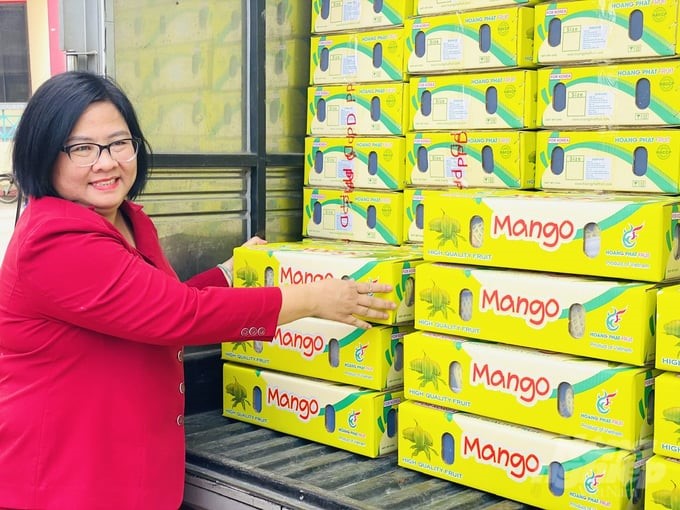
Currently, mangoes have met the strict requirements of partners, such as pesticide content, harmful disease control, traceability, irradiation, etc. Photo: Le Hoang Vu.
"Currently, countries importing Vietnamese mangoes all impose different technical barriers, forcing the company to comply absolutely, because just one batch by accident can mean losing an entire market of tens of millions of dollars. So, we hope that farmers participating in the program must comply with technical procedures. On the momentum of victory, Vina T&T is promoting the expansion of mango export markets to a series of markets to continue to bring mangoes further," said Mr. Nguyen Dinh Muoi, Deputy General Director of Vina T&T Import-Export Co., Ltd.
According to Mr. Nguyen Si Lam, Director of An Giang Department of Agriculture and Rural Development, the province's fruit tree area now reaches over 13,000 ha, mainly mango, banana, grapefruit, orange, tangerine, etc. Mango farmers earn a profit that is much higher than in other models. For areas specializing in mango farming, such as Cu Lao Gieng in Cho Moi district, the province supports infrastructure, irrigation systems, and mango growing directions according to VietGAP standards; supports farmers to achieve quality certification to export to high-end markets such as South Korea, Japan, Australia, and the US. At the same time, create conditions for businesses to build processing factories and link mango consumption in a sustainable direction, limiting risks when depending on a few markets.
As of now, the entire An Giang province's mango area reaches about 12,000 ha, of which the mango area produced according to VietGAP standards is more than 200 ha, with an output of about 1,900 tons/year. Currently, the mango area in An Giang has been granted over 20 codes for export, with a total area of nearly 300 ha. However, in recent times, mango consumption has depended entirely on the domestic market and China. Recently, An Giang mangoes have been added to the South Korean, US, and Australian markets, but the quantity is not significant.
To develop the "An Giang Mango" brand for export, in the coming time, the agricultural sector will accelerate the progress of issuing mango growing area codes (codes) in areas that do not have codes and areas that need to be issued in Cho Moi, An Phu, Tri Ton, and Tinh Bien districts, Tan Chau town, and Long Xuyen city.
This is a favorable condition for the agricultural sector to continue to reorganize production and develop cooperatives and cooperative groups associated with mango raw material areas. Thereby, linking more and more of the locality's mango areas and promoting the implementation of the province's agricultural sector restructuring project, aiming to transform production, adapt to real conditions, overcome difficulties, and promote agricultural economic development.
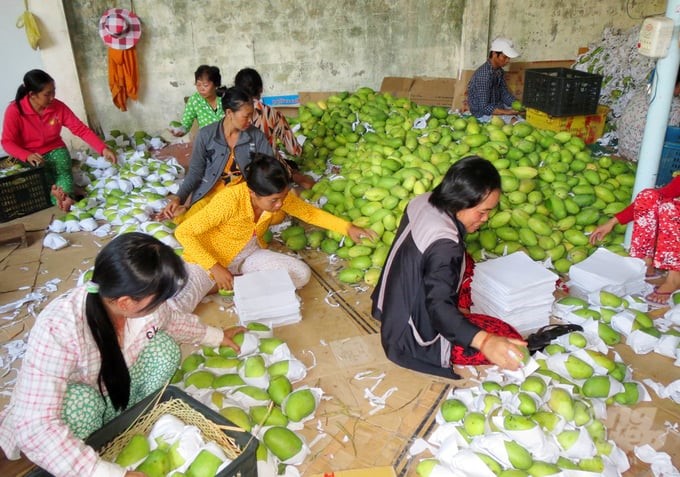
As of now, the entire An Giang province's mango area reaches about 12,000 ha, of which the mango area produced according to VietGAP standards is more than 200 ha, with an output of about 1,900 tons/year. Photo: Le Hoang Vu.
"Developing high-quality mango areas and building sustainable production and export chains initially affirm the position of An Giang mango in the international market. This is an important turning point for the local agricultural sector, not only bringing great value-added opportunities but also helping to promote the image and reputation of local agricultural products," shared Mr. Nguyen Si Lam, Director of An Giang Department of Agriculture and Rural Development.
Translated by Thu Huyen
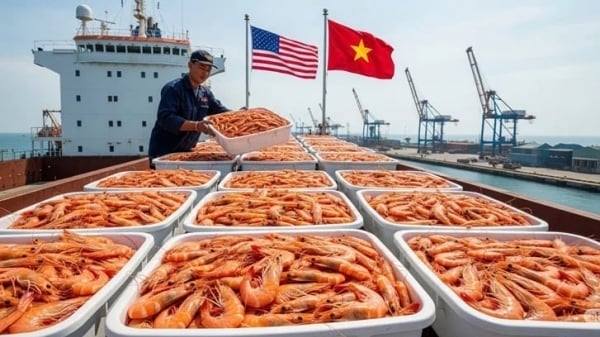
(VAN) Vietnam and the United States are proactively working together, each in their own way, to ensure that every container of agricultural goods carries not just products, but also long-term trust and value.
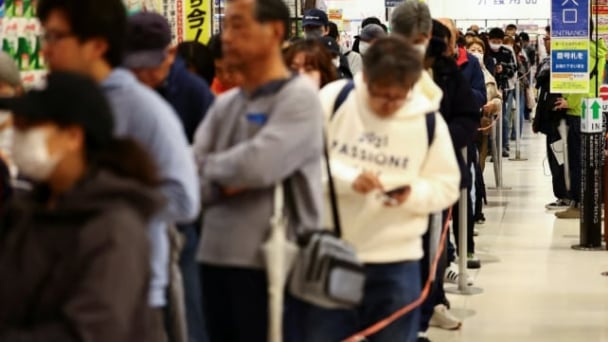
(VAN) Stores have started selling rice from the government’s stockpile to feed demand for the staple.
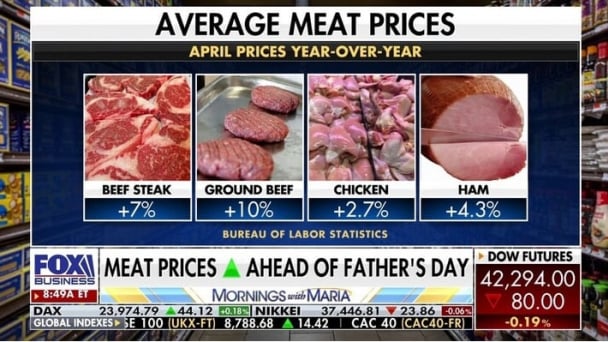
(VAN) Omaha Steaks CEO says rebuilding cattle herds will take about a year to ease price pressures.
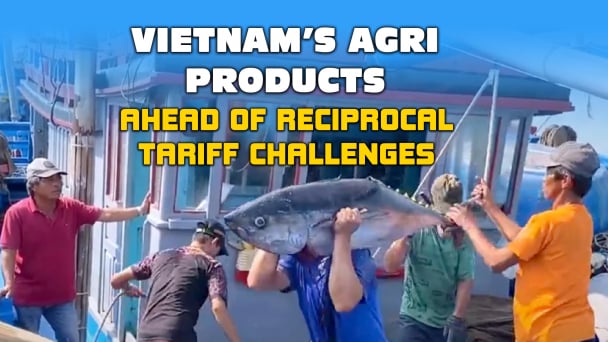
(VAN) Reciprocal tariffs and recent NOAA rulings are presenting substantial obstacles for Vietnamese tuna exporters in the U.S. market. As a result, the industry is actively seeking alternative export destinations.
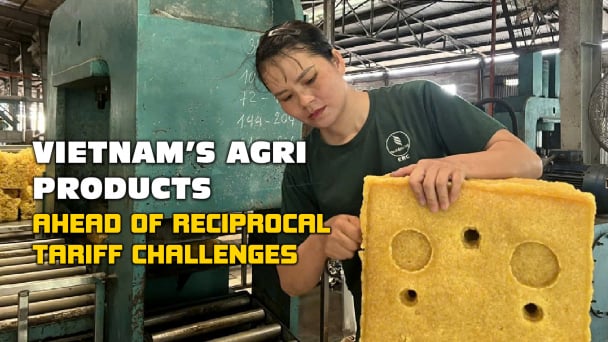
(VAN) Although the U.S. holds a small share of Vietnam’s rubber exports, newly imposed reciprocal tariffs are expected to impact the sector. Vietnamese enterprises must optimize the use of significant markets and free trade agreements.
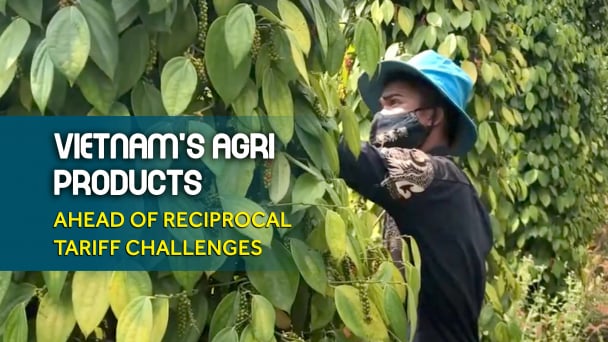
(VAN) Vietnam's pepper industry is looking forward to the final tariff decision in order to sustain its robust presence in the United States, the country's biggest pepper market.

(VAN) The U.S. is the largest market for Vietnamese cashew nuts. However, when exports to the U.S. encounter difficulties due to reciprocal tariffs, Vietnamese cashews still have many other potential markets.